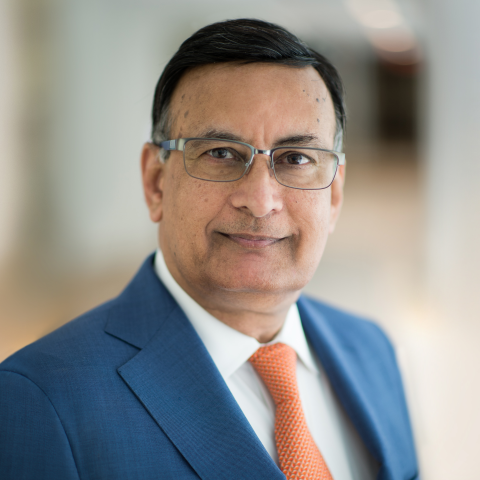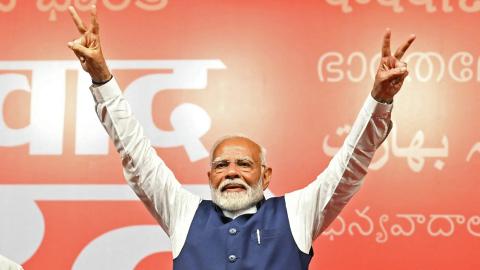At the start of India’s 44-day election exercise, during which 900 million eligible voters could cast their ballot in seven phases, pundits predicted an easy win for Prime Minister Narendra Modi and his Bharatiya Janata Party (BJP). But once the 640 million votes, reflecting a 67 percent turnout, were counted, the results surprised everyone, above all Modi himself.
Modi will likely still become prime minister of the world’s largest democracy for a third time, a feat managed only by India’s first prime minister, Jawaharlal Nehru, in the 16 years immediately following independence in 1947. But he will have to do it with the support of coalition partners, diminishing his stature as an elected strongman with a mission from God.
Since he was first elected chief minister of the state of Gujarat in 2001, Modi has never governed without a clear majority for his party in the legislature. His leadership style is more like that of an American chief executive than a European parliamentary coalition manager. But Indian voters showed some wariness of Modi and the BJP becoming too self-assured since their sweeping win in 2019.
The result of India’s latest elections is in some ways a reminder of how democracies can successfully apply self-correction mechanisms. In addition to concerns about over implementing BJP’s Hindutva ideology, which equates Indianness with Hinduism, some observers were worried about the prospect of authoritarianism in India. Modi’s team tended to brush aside criticism even when it came from longstanding friends or admirers.
Modi maintained tight control over Indian government and politics for 10 years. Weak opposition at the federal level also led to the BJP toppling state governments under regional parties. Breakaway factions were created within these parties by offering individuals government positions and money. The Indian National Congress (INC), which led India to independence from British rule and ruled India for almost five decades, was routed by the BJP in the last two national elections.
In addition to mocking Congress leader Rahul Gandhi (great-grandson, grandson and son of previous prime ministers) as an entitled dynast, Modi’s party had also pursued him in court, sentencing him to a prison term (later suspended by the Supreme Court), and voted to deprive him of his seat in parliament.
Despite that, the Congress party increased its popular vote from 19 percent in 2019 to 21 percent in 2024. The number of Congress party seats in the 543-member parliament rose from 44 in 2014 and 52 in 2019 to 99 this time around.
Rahul Gandhi is now a serious contender for power and has been rewarded for the hard work of walking across the country to revitalize his party. Political balance has somewhat been restored, with the Congress in position to at least question the government’s policies and the BJP being put in a position of having to answer them.
Regional parties were able to reassert themselves in various parts of India during the latest election, highlighting India’s ethnic diversity. In the end, BJP retained support in some stronghold states (Chhattisgarh, Gujarat, Madhya Pradesh), gained the eastern state of Odisha, but lost seats in Uttar Pradesh, Rajasthan and Maharashtra. BJP attempts to win seats in southern and eastern parts of India also faced pushback.
The rhetoric of identitarian politics, pitching India’s Hindu majority against the country’s Muslim minority, had helped the BJP in the previous two general elections. But this time, people were more concerned about economic distress, and the BJP discovered the limits of religious identity as a basis for voters’ choices.
Still, the BJP’s popular vote share is almost the same as it was in 2019. But in 2019, that translated into 303 seats; it yielded only 240 seats this time. There seems to be a ceiling on the party’s ability to attract voters beyond its base. Communal slogans might have hurt the ruling party instead of rallying non-BJP Hindu voters to its side.


















